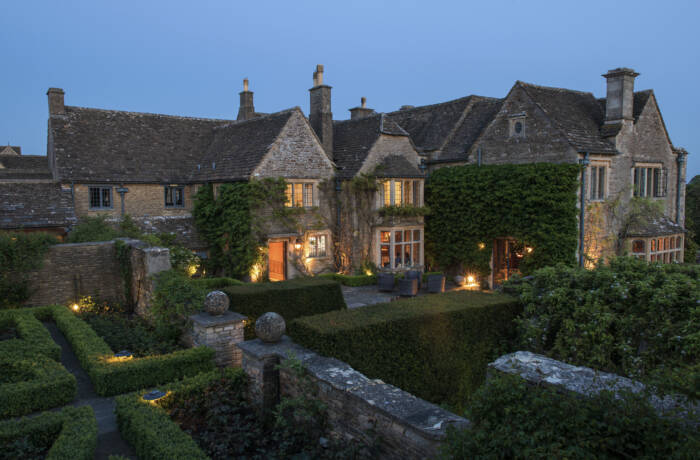
Inside OMM designed by Kengo Kuma & Associates. Photo by Batuhan Keskiner
This September will see the opening of Odunpazari Modern Museum (OMM), a major new art museum in Eskişehir, Turkey. Designed by architects Kengo Kuma and Associates, the museum is the brainchild of art collector Erol Tabanca, whose collection will provide the permanent exhibition, and his daughter Idil Tabanca who sits at the helm as Creative Director. We speak to Idil about her multidisciplinary approach, creating an international cultural destination and the challenge of bringing contemporary art to new audiences.

Idil Tabanca. Photo by Emily Hope
LUX: You were one of the founding editors of the successful New York-based art and fashion magazine Bullett – do you see yourself primarily as a journalist?
Idil Tabanca: No, not at all. I studied digital media because I always thought I was going to go into film. I wanted to do set design, production design, that kind of thing. Growing up that was my dream. I just wanted to make stuff. After I graduated, I worked in film for a couple of years on various projects in the US and then I was called in to do production design for a film in New York and that’s where I met the people I ended up setting up the magazine with. We just fell into, it was very organic and we didn’t have any money so we became our own publishers because we had all this great content that we wanted to put out. There are so many stories which aren’t at all luxurious like we would get our friends to dress up as catering staff for the cover shoot of some Oscar winning actor. We didn’t have the money to hire actual caterers but we wanted to keep up the appearance. It was like the con that didn’t end.
Follow LUX on Instagram: the.official.lux.magazine
LUX: And you’ve gone from that to being the Creative Director of OMM.
Idil Tabanca: Well yes, and this is a very different project because for starters, it’s my family’s foundation. My father [Erol Tabanca] started collecting art about thirty years ago. It started out just as a pure love for art and the pleasure he got from it, there was no strategy involved. He was buying what he wanted to buy. As time progressed, he filled up his house and then his entire office, he didn’t have enough room for the art and he also wanted to share the works that he found so inspiring so he started the foundation. That was around the time I was closing the magazine because the internet happened. It happened to the world. So many magazines were closing. The museum is a great opportunity because if I was at another institution like this, it would’ve taken me a really long time to be here. I felt like there could be an opportunity for me to have a voice, to have a say for the young people that needed this kind of a platform back in Turkey.
I feel like there’s huge potential in Turkey for artists, but not necessarily any organisations and platforms. The exciting part of the project for me is that I can actually give young people that opportunity.

Erol & Idil Tabanca pictured outside the museum. Photo by Gökhan Polat
LUX: Have you always shared your father’s passion for art?
Idil Tabanca: It was part of the magazine: we covered art, fashion, culture and cinema. I have always been interested in video and photography because of my studies, but I don’t have this amazing knowledge of art history or anything like that. It wasn’t part of my education so I’m learning that part now. Even just getting familiar with the art collection is a huge amount of work. I feel like I’ve got a good sense of aesthetics, but I’m learning the rest. I’m exposing myself to a lot of art, I read a lot, go to a lot of exhibitions.
Read more: London to Cornwall in a luxury Mercedes-Benz camper van
LUX: Can you tell us more about your concept for the museum?
Idil Tabanca: We’re from Eskişehir as a family and people from Eskişehir are very proud because it’s like a secular, intellectual, very young and fun town in Turkey. It’s very unique. They say it’s like a European city in Turkey. People are very open minded and because of that, there’s a huge potential for young people. There are also three art universities. My father has always felt that he wanted to give back to that community in some way.
We chose Kengo Kuma, whose work is so iconic, to make the museum iconic. Bilbao was an industrial city before the Guggenheim came and now it’s known as an art destination; I think Eskişehir has that same potential. For a long time in Turkey because of the regime and what’s happened there, there hasn’t been a lot of exciting developments. We also don’t have a huge museum culture. I don’t have any memories of going to museums with my family. I love that we might be able to change that for some people, and to change the place. Having a museum like this, starts an exchange, it becomes a bridge between cultures. For example, we have Kengo Kuma’s work and we have Japanese artists who are showing. We want different cultures to be able to merge in the space.

Photo by Batuham Keskiner

Photo by Batuhan Keskiner
LUX: We hear that the museum is also going to have a strong connection with fashion, is that right?
Idil Tabanca: Yes, I want every aspect of the museum to be like an art work in its own right and I’ve got Turkish fashion designer Dilara Findikoglu to design the uniforms for the museum staff. She’s blown up recently and dresses people like Madonna. I think that she’ll be the creative director of somewhere like Alexander McQueen very soon. But the reason for collaborating with her was, firstly, to challenge people. She is completely embraced internationally and keeps winning fashion awards, but in Turkey I feel like it’s part of our culture to be suspicious of anything that’s actually good and we do that to artists too. We don’t appreciate them at home as much as you do in Western culture. In Turkey, there’s no sense of protecting the things that are valuable and that’s the same with ruins even, you’re just allowed to walk all over the place. So I want to work with and give value to artists and designers from our communities that are doing really well outside of the country. That’s the reason we’re putting together a homecoming show to start a dialogue about who we are as a culture and why we don’t appreciate these people or talk abut them. We have local celebrities, but they’re not the people who are making a difference in the world.

‘Sleeping Girl’ by Hans op de Beeck is one of the artworks in the permanent collection. Photo by Kayhan Kaygusuz
LUX: And how will the exhibition programme work?
Idil Tabanca: We have the permanent collection, which will constantly change and be curated by different people and then we’ll have travelling shows and events. Exhibitions by other artists who have nothing to do with the permanent collection. For example, we’re bringing work by Marshmallow Laser Feast (who recently had a VR experience at the Saatchi gallery) to the opening. They’re really interesting because they use technology to bring people back to nature – I’m really excited to collaborate with them. Also the other part which will be so exciting for me is that we’ll get people coming to the museum who haven’t been exposed to anything, we’re going to get such a raw audience.

One of the selected works from the opening exhibition: Uyuyan Adam (2010) by Ramazan Bayrakoğlu. Image by Ozan Cakmak
LUX: What are local attitudes towards contemporary art? Is there much of an existing art scene?
Idil Tabanca: Yes, there is definitely an art scene. There’s a tiny wooden museum, glass blowing is huge and there are lots of little shops that make ceramics. There’s part of the town which is all these old houses, which look like they would have hundreds of years a go. There’s a wax museum, which is hilarious because no-one looks like they’re supposed to, but it receives 11,000 visitors on the weekend, which demonstrates the lack of cultural activities. But yes, we’re in talks with the art universities. We want to have residency artists that come in from abroad and to give them access to the facilities. We’re also going to organise discussions and education programmes. There’s the only animation studio in Turkey there so there’s definitely a lot of potential.
Read more: Savoir Beds’ MD Alistair Hughes on the value of craftsmanship
LUX: Are there any contemporary Turkish artists that you’re particularly excited about at the moment?
Idil Tabanca: Nilbar Güreş’ work is phenomenal. She’s based in Vienna. Another one of my favourite Turkish artists is Sukran Moral. She’s definitely someone I’d love to bring [to the museum] sometime in the future. She’s pretty established and is currently based in Italy. She’s fantastic. Also Fatma Bucak is another young Turkish artist that I’d like to bring to the museum. She has some wonderful videos.

‘Aylin’ (2014) by Sinan Demirtaş will also feature in the opening exhibition. Image by Kayhan Kaygusuz
LUX: How much of a consideration is sustainability?
Idil Tabanca: The building is made from sustainable forests, and we are trying to make it all as sustainable as possible, but in a place where that dialogue hasn’t started yet, it’s going to be tougher for us. So we have this task of talking to people and explaining to them why it’s important, why we’re not giving out plastic bags for example. I think it’s the responsibility of institution like ours to be a leader on these kinds of things.
LUX: Lastly, for first time visitors to Eskişehir, what are your hot tips for things to do and see?
Idil Tabanca: Oh my god, there’s so much to do! There’s a really good thermal spa. Then there’s also this fake Disneyland that I think is fascinating. You go and Snow White has her wig on sideways, it’s just a very weird place. The old part of town too where they have all these really cute houses and artists with their own little studios and shops selling handmade things. The area is called Odunpazarı, and it’s so beautiful. The museum is right in the middle of everything so the best way is to just walk around and discover the area.
OMM will officially open in September 2019, for more information visit: omm.art








